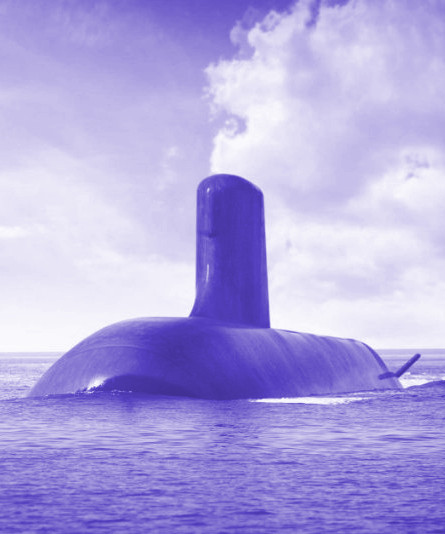CSIRO study to keep subs under
 Australian engineers are using advanced crystal technology to allow submarines to stay submerged longer while using less power.
Australian engineers are using advanced crystal technology to allow submarines to stay submerged longer while using less power.
CSIRO says its cutting edge new technology could form part of the Australian Government’s Future Submarines Program (SEA1000), the largest and most complex military program ever undertaken in Australia.
SEA1000 involves the design and construction in Adelaide of 12 highly advanced submarines with a range in excess of 33,000 kilometres and capable of operating independently for up to 80 days.
For a non-nuclear submarine those figures are already impressive, but CSIRO and engineering services company QinetiQ are working on making it even more so.
“We’ll be testing whether advanced materials known as Metal-Organic Frameworks [MOFs] can allow submarines to remain submerged longer,” said CSIRO Project Leader Associate Professor Matthew Hill.
“MOFs have the largest internal surface area of any known substance, which can be optimised to capture gases such as carbon dioxide [CO2].
“The more CO2 MOFs can capture and store, the longer a submarine can potentially remain underwater, undetected.”
QinetiQ Australia Managing Director Greg Barsby says: “If proven, MOFs could give Australian submarines an edge: a performance advantage that lets them dive longer while placing less demand on a submarines precious space and weight, as well as critical systems such as power.”
As submarines are an enclosed space, CO2 expelled by the crews’ breathing and other chemical processes builds up and can eventually become toxic.
Carbon dioxide scrubbers avoid that, by removing CO2 from a submarine’s atmosphere and storing it for later release.
Current CO2 scrubbers though take up a large amount of the limited space, weight and power available in submarines.
They can also generate corrosive by-products, which have both health and sustainment implications in the close confines of a submarine.
A MOFs based system would use a smaller amount of space, place less demands on a sub’s systems and would not rely on damaging gases.
It could also be incorporated into existing submarines such as Australia’s current Collins class to extend their operational life and capabilities.








 Print
Print